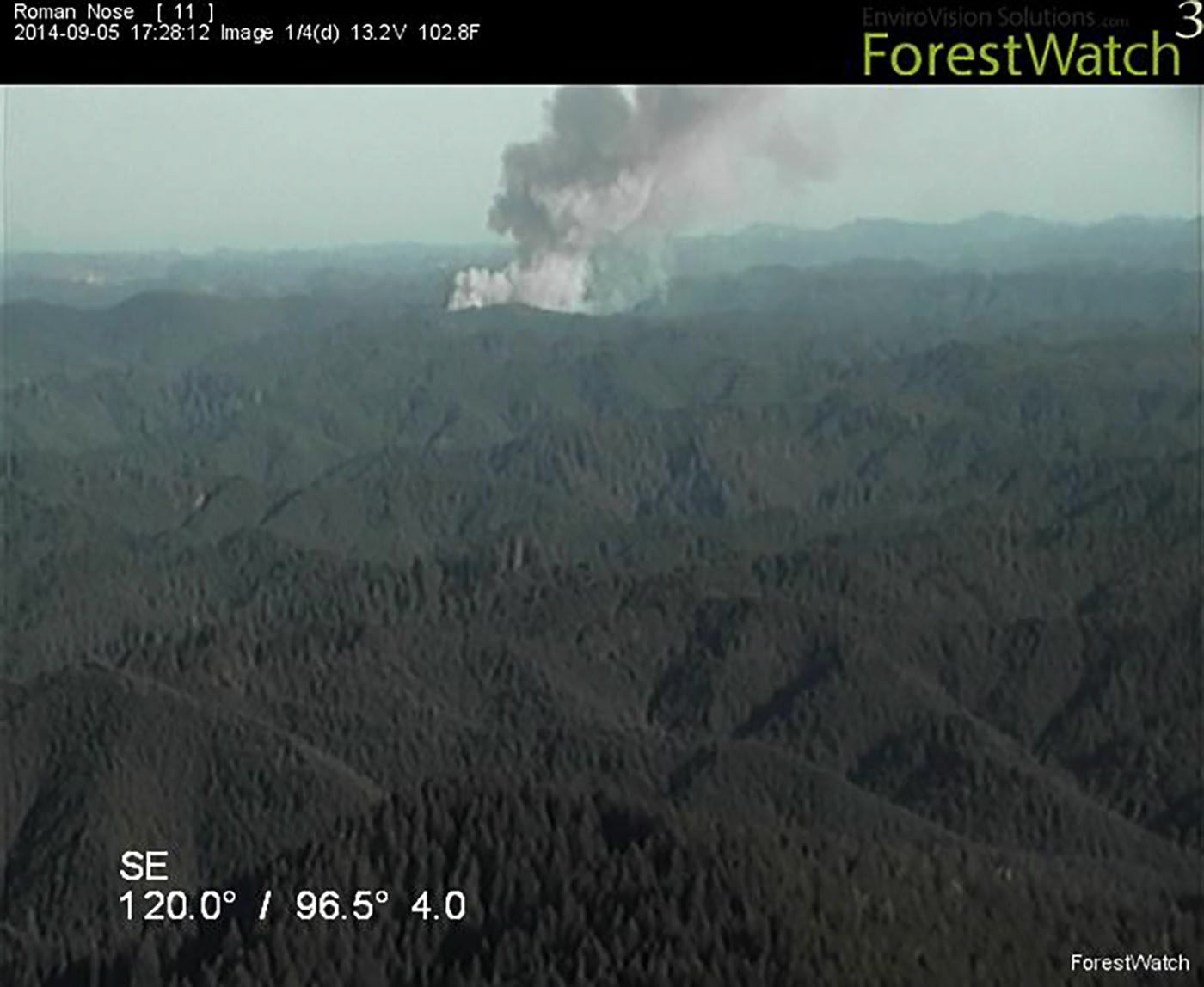EUGENE, Ore. — Last Friday afternoon, a fire patrol on a high point west of Cottage Grove caught a glimpse of smoke in the distance.
Western Oregon was on red-flag forest fire alert, with intense heat and gusting winds from the east driving up the risk of a blaze. Any forest smoke was cause for worry.
But getting close to that smoke on steep, densely forested terrain to see the fire’s location and size would have taken hours.
So the state Department of Forestry instead took a quick look, using video camera technology that has become increasingly popular worldwide to zero in on fires in remote forests.
Since 2007, the department has installed three remotely operated video cameras on towers on high peaks in western Lane and Douglas counties, said Link Smith, district forester for the Western Lane District.
Using the camera on Roman Nose, a 2,854-foot-high mountain south of the smoke location, the agency on Friday was able to zoom in on the fire.
“Literally within five minutes we’re going, ‘Oh wow, this thing is building quickly,’?” Smith said. “We knew we had a big one.”
That allowed the agency to quickly marshal the forces it felt it needed.
As of Tuesday, agencies had 774 personnel and an array of vehicles and aircraft working the Yellow Point Fire, which was being largely held at about 785 acres. Crews are eager to consolidate their grip on the blaze ahead of hotter, windier weather that is forecast to hit later this week. Dry, hot winds from the east are expected Thursday and Friday in Western Oregon, the National Weather Service said.
“Our whole goal is to rapidly initiate an aggressive attack on a fire and keep it small,” Smith said.
Remotely operated video cameras have proven to be a useful and cost-effective way to do that, he said. Along the way, the job of forest fire lookout has become increasingly rare.
The state forestry department and private forestry associations in the past decade have installed about 30 remote video cameras on peaks across western and southwestern Oregon to help them keep an eye on the private and federal Bureau of Land Management forests they are responsible for policing. The state and industryfunded forestry associations equally split the cost of fire protection in areas they oversee, Smith said.
The cameras are typically perched on locations with lookout towers that previously were staffed by smoke watchers.
Oregon has had a total of 849 forest lookout towers, but only 207 still are standing. Of those, only 106 are still staffed on a regular basis, according to the Forest Fire Lookout Association. Over time, cameras cost less.
The cameras usually cost about $35,000 to install, Smith said. Video feeds are monitored by humans at a central office in Roseburg, and can be seen from other locations by authorized users.
The cameras are a big help when people call in and claim to have spotted smoke in a remote forested area, he said.
“We have a helicopter on contract, but it is expensive to fly,” Smith said. “We can use the cameras to verify if you really think you have something or not.”
The lookout towers are great spots to put the cameras because the towers were built on the highest peaks with the best visibility.
In Lane County, the state Forestry Department has remote cameras on Prairie Mountain, a 3,422-foot-high peak near the Lane-Benton county border; and Walker Mountain, a 2,347-foot-high peak between Eugene and Florence, Smith said.
The cameras take snapshots as they rotate 360 degrees every three minutes, Smith said.
Once agency officials spot smoke in the day or flame at night, they can zoom the camera in on the location, Smith said.
Many of the lookout towers already have electrical power that can be used for the cameras. Some of the lookout areas also sport radio and other antennas. And for locations that don’t have a power source, solar panels can provide sufficient juice.
There’s been little vandalism of the cameras, Smith said, in part because they also film the surrounding site, so anyone who approached them would be on video.
“It’s a pretty thorough security system,” he said.
Many states no longer have any staffed forest fire lookouts, according to the lookout association. Florida has the most — 130 — with Oregon in second place.
Washington has 107 lookouts standing, but only 30 are staffed. California has 198 standing but only 50 are staffed, according to the association.



